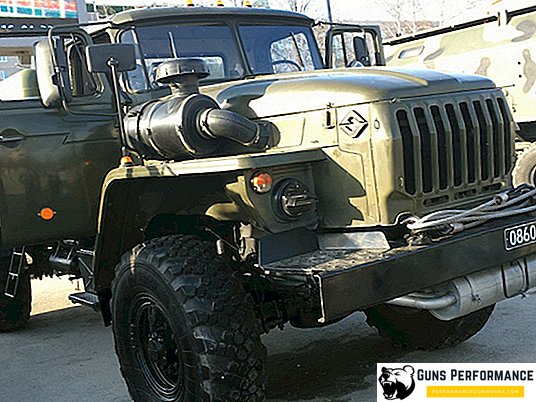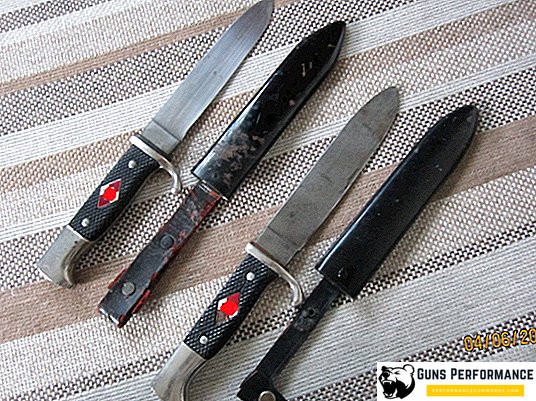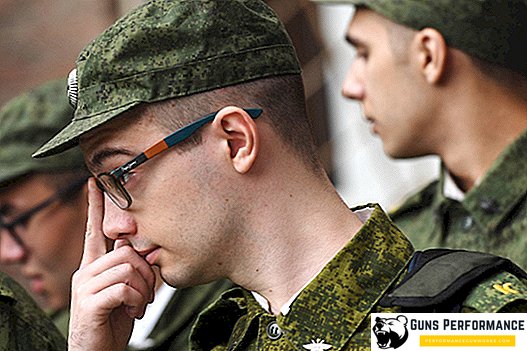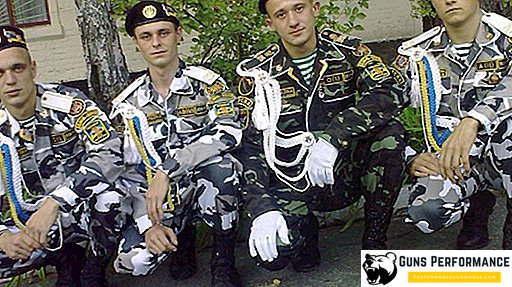MLRS 9К57 "Hurricane" is a Soviet multiple launch rocket system developed in the 70s. It is still used by the Russian army. The main objective of this weapon is the defeat of manpower and other enemy targets at distances from 10 to 35 km. MLRS "Hurricane" can be used for remote production of anti-personnel and anti-tank mines.
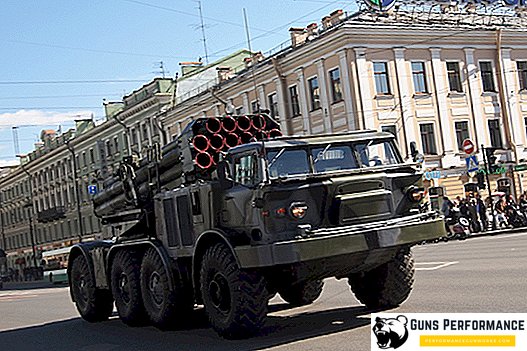
The complex was developed by the Tula State National Production Enterprise Splav, in which another well-known jet system, the Grad, was created earlier. Work on the creation of the RSZO 9K57 "Hurricane" was led by General Designer Ganichev.
According to the main characteristics, the “Hurricane” has significantly exceeded the B-21 “Grad”: it is more powerful, has a greater range of fire and can use a wider range of ammunition, which increases the versatility of this weapon.
The MLRS "Hurricane" is in service with several dozen countries of the world, it took part in many conflicts and more than once proved its high efficiency.

History of creation
In the mid-60s, the Soviet military received the excellent RSZO "Grad", which at the time had no analogues of any of the armies of the world. However, the military needed another MLRS complex with slightly different characteristics: with a longer range and more powerful ammunition. Since 1963, the designers of GNPP Splav have been proactively working on the creation of such MLRS. In 1967, a preliminary design of the system was prepared, bench tests of various components and firing of experimental rockets were carried out.
In 1972, ground tests of the Hurricane and the completion of the reactive system began. At this stage, the designers were able to get the characteristics that the military demanded of them. The range of fire of the MLRS reached 35 km, its accuracy was significantly increased (it is 1.5 higher than that of the Grad) and the effectiveness of the enemy's defeat. A volley of one launcher covered an area of 42 hectares.
Designers "Splava" the first in the world were able to create a cluster head of a jet ammunition for the MLRS. Since then, several types of cluster munitions for the "Hurricane" have been developed, besides munitions with fragmentation combat elements, the missile can be loaded with anti-tank and anti-personnel mines.

In 1975, the "Hurricane" was adopted, its production continued until 1991.
Afghanistan became the baptism of "Hurricane", the Soviet troops widely used this RSZO throughout the conflict. The "Hurricane" also participated in the fighting in Africa, the Syrian army used it against the Israeli troops in the early 80s, and the Russian federal troops - in both Chechen campaigns. MLRS 9К57 "Hurricane" was actively used by both parties to the conflict in the east of Ukraine.
Description
MLRS "Hurricane" has the following components:
- 9P140 combat vehicle;
- rockets;
- transport loading machine;
- fire control complex;
- meteorological complex;
- training equipment;
- topographic survey vehicle.

The main component of the "Hurricane" is the 9P140 combat vehicle, made on the basis of the ZIL-135LM vehicle with a 8x8 co-forest form-element. The artillery unit consists of sixteen tubular guides, which are combined into a single package. Guides fasten on a rectangular platform - a cradle. The swinging part is mounted on a rotating base, which provides guidance of the guides in azimuth. Guidance is possible with the help of a manual drive.
Allowance in the vertical plane is possible in the range from + 6 ° to + 55 °. The angle of the h-ri-zone-tal-no-go-on-de-tion is from - 30 ° to + 30 ° from the longitudinal axis of the car. In the back of the car jacks are installed, which increase stability when shooting.
"Hurricane" is equipped with a panoramic sight and a gun panorama, there is a walkie-talkie and a night vision device.

Tubular guides have a U-shaped groove, through which the rocket projectile is attached to the rotational motion.
Shooting can be carried out both in salvo and single shots. A variant of the so-called ragged salvo is possible, during which the first eight missiles are fired at intervals of 0.5 seconds, and the remaining eight - 2 seconds. The time of the usual salvo is 8.8 seconds, and the "ragged" is 20. Shooting can be conducted from the cab or remotely. The firing range reaches 35 km, if the fire is fired at smaller distances, then special brake rings are installed on the head of the rocket.
ZIL-135LM is equipped with two eight-cylinder engines, with a capacity of 180 liters. with. each. The power plant is behind the cab. The wheels of the rear and front axles are driven, the machine is equipped with a tire inflation system.
A similar chassis is used for the transport-charging vehicle. It can carry up to 16 missiles. Charging can be carried out without special training, on any sites, its time is 15 minutes. The transport-charging machine is equipped with a crane, a tray with a rammer, cargo carts, docking devices, electrical equipment and a reconciliation mechanism.

The simplest and most used type of rockets for the Uragan MLRS is 9M27F with a high-explosive fragmentation warhead. The ammunition consists of the head and missile parts. The warhead and fuse are located in the head section, the solid-fuel engine and stabilizers are located in the rocket section. They (like the "Grad") are in the shape of a sector of a cylinder and are revealed after the launch of a missile from a guide.
Missile MLRS "Hurricane" 9M27K has a cluster warhead, it contains thirty fragmentation elements. They are located in five sections of six pieces around the axis of the projectile. Each such element is equipped with its own stabilizers and contains 350 ready-made damaging elements with high penetrating ability.
"Hurricane" was the first volley fire system that could be used for remote mining of the area. At a given height, the warhead of the rocket is exposed to a powder charge, and the warheads are scattered in a certain area. The fuse of each mine is blocked by a deceleration system, which shuts off after the ammunition has landed. After that, the mines are on alert.

As combat elements, the "Hurricane" missile can carry anti-tank contact mines (it explodes only after hitting them) and mines that react to the magnetic field of a combat vehicle. The latter have cumulative notches and can penetrate tank armor.
Also, the warhead missile can be equipped with anti-personnel mines PFM-1C (312 pieces). This mine has a plastic body and a small wing, which is intended to disperse ammunition over a large area. In shape, they resemble a butterfly or a petal. Such mines were widely used by Soviet troops in Afghanistan, and civilians, especially children, suffered greatly from them.
The missile can be equipped with a space-detonating warhead.

Technical characteristics of the MLRS 9K57 "Hurricane"
Below are the tactical-technical characteristics of the Uragan system.
| Characteristics of the combat vehicle | |
| Number of guides | 16 |
| Mass charged with the calculation, t | 20 |
| Weight without shells and calculation, t | 15,1 |
| Vertical pickup angle (shooting zone), hail | +6… +55 |
| Maximum speed of pointing electric drives, degrees / s | 3 |
| Minimum speed of pointing electric drives, degrees / s | 0,2 |
| Full salvo time, from: | |
| at a constant pace | 8,8 |
| at "ragged" pace | 20 |
| Firing range, km: | |
| maximum | 35,8 |
| minimal | 5 |
| Time, min: | |
| transfer from traveling to combat | 3 |
| loading | 14 |
| preparation for urgent relocation | 1,5 |
| Chassis | Zyl-135LM |
| Chassis weight, t | 10,6 |
| Dimensions, m: | |
| in the stowed position | 9.63x2.8x3.23 |
| in a fighting position | 10.83x5.34x5.24 |
| Maximum speed, km / h | 65 |
| Power reserve, km | 570 |
| Wade depth, m | 1,2 |
| Calculation of peace / wartime, people | 4 (6) |
Ammunition specifications
| Missile characteristics | |||||
| Index | MS type | Weight, kg | Mass of warhead, kg | Length | Firing range, km |
| 9M27F | high-explosive | 280 | 99 | 4833 | 10-35,8 |
| 9M27K | cassette, frag | 271 | 89,5 | 5178 | 7,5-35 |
| 9M27K2 | anti-tank mining | 271 | 89,5 | 5178 | Jul. 34 |
| 9M27K3 | anti-personnel mining | 271 | 89,5 | 5178 | Jul. 34 |
| 9M51 | detonating space | 256 | 143,5 | 5147 | May.13 |
| 9M59 | anti-tank mining | 270 | 90 | 5178 | Oct.35 |


